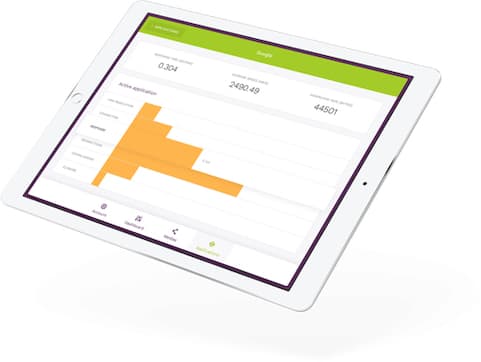
In this case, we see that the site returned a 200, which is a successful response, but took so long that Pingdom considered it a timeout: Item 2 provides the site's response to the check and Pingdom’s attempt to determine the root cause of the downtime. Item 1 tells us when the issue started occurring, which we can attempt to correlate to any recent changes or external events. Let’s look at a site that is having some trouble to see how Pingdom can help. Let the check run a while (a few hours), then you can access reports for each site in either the left navigation menu or the individual check dropdown menu. You will now see a new check in the dashboard, from the Uptime page: Sometimes intermittent issues result in a site going up and down within a few minute period.Ĭlick Create check when you are done. You may not be the one responding to the issue, but you probably want to know when it’s back up. It becomes noise during a potentially stressful time.Īlert when back up. It’s assumed that you will be working on the issue, and won't need to be alerted to an issue you're currently handling. Never, 1 or 2 down cycles is adequate for most developers. Resend alert every: This controls how often alerts are repeated. If you are aware your site is having performance issues, it isn’t helpful to be reminded constantly, so sometimes a longer time period before being alerted ensures you are only notified of a severe failure. When down, alert after: 1-5 minutes, depending on the risk of false positives. as each user can set up their own alerting preferences. It's better to create teams within Pingdom, rather than a forwarding email address (e.g. We suggest you select the region where the majority of the site's users are located.Īlerting Settings: You can create teams, or assign alerts directly to users. This is very useful if you are using Varnish to cache a site you can create a simple PHP script which queries the database and returns a specific value to determine if the site is functioning as expected. From the Optional tab, you can add user credentials and expected response text. If your site is using HTTPS, select that dropdown option. URL/IP: On the Required tab, enter the URL for the website. Remember, these checks also will appear in web access logs, so too many checks may make it harder to debug other issues.Ĭheck Type: You can monitor several different things with Pingdom: email services, network components such as DNS or specific ports, or a website. While one minute is the minimum and acceptable to use, often a check every 5 minutes or more is adequate, and will allow for brief network throughput issues. " Home Page.”Ĭheck Interval: How often Pingdom will check the site. Name of Check: An easily recognizable name for the check, e.g. In the modal that opens, add the following information where indicated: From the main user dashboard or from the left navigation's Monitoring > Uptime sub-menu, click on Add uptime check: The left navigation menu contains the different types of monitoring checks, reports, and a few other features.
#Checking internet uptime how to#
Because this guide explains how to manually create checks, we suggest you skip this. When you first load the Pingdom dashboard, it will try to guide you through adding your website, and creating checks. Click the SET UP YOUR MONITORING button to go directly to the Pingdom dashboard. Now we will log in and set up monitoring.
#Checking internet uptime trial#
Once you've read and agreed to Pingdom's services agreement, click START FREE TRIAL to continue. If you chose the free trial, you have until the end of the trial time to try Pingdom before the card is billed. Plans can be upgraded at anytime.Īdd your credit card information. For this guide, we selected the Pingdom Starter account. Review and choose from available plans and select either monthly or discounted annual billing. On Pingdom's homepage, click Sign Up or if available, Start your Free 14-Day Trial. For a free alternative to Pingdom, checkout New Relic® Performance Monitoring.Ī Drupal or WordPress site on Pantheon to monitor. It's OK if you don't have one yet, this guide goes over the signup process.

What You’ll NeedĪt least a paid Starter plan on Pingdom. Additional checks include a Page Speed check, which tracks page load time, and Real User Monitoring, which measures other important performance metrics.

In this guide, we will create and configure the simplest check for a website, an Uptime Check, which pings a page and verifies a response. Pingdom provides several different types of uptime and performance checks. Monitoring services, such as Pingdom, allow those responsible for site performance and uptime to know when a website is having problems delivering content.


 0 kommentar(er)
0 kommentar(er)
